Country churches for sale: how a property boom came for places of worship
The sell-off of country churches is a boon for savvy buyers – but what are the ethical and practical issues that new owners face when turning God’s house into their own?

When Nanette Charleson wakes each morning she pads over to the tall arched window that looks out from her bedroom to her backyard, a tree-filled oasis of birdsong and dappled light with the odd heritage rose reaching for the heavens. “Good morning Ada,” she’ll say, looking down to a stout marble headstone outside the window. It’s a little ritual she’s developed since buying this old church with her husband and taking ownership of what is surely one of Australia’s most unusual private gardens.
If Nanette were to silently acknowledge all of the names that appear in her backyard she would be standing at the bedroom window for some time because this is a garden of graves – more than 100 plots and tombstones occupy the gentle slope. The pioneering and newer families buried here are all strangers to her but they are as deeply knitted into the fabric of this place as the 1860s stone chapel Nanette and her husband Adam have grown to love, and the big trees and 100-year-old roses they nurture.
Ada is Ada Maria Day. The Day family have deep roots here in the Hay Valley in the Adelaide Hills, 40 minutes’ drive from the capital. Ada, a mother of three, died in 1962 and she’s resting outside the Charlesons’ bedroom window with her husband Alfred. On a drizzly autumn morning Nanette and Adam weave among the graves, stopping to point out a moss-splattered rock with a plaque announcing a Day family time capsule sealed in 2003, to be opened next New Year’s Day.
So many stories, so many family lines buried here: not just the Days but the Chambers, the Haines, the Theobalds … The earliest grave dates back to the 1850s.

It’s a big responsibility for a couple with no special interest in cemeteries and no personal connection to the area, but if the Charlesons wanted the deconsecrated and fully renovated primitive methodist church for their next home then the graveyard came too.
Such is the rush to snap up country churches hitting the market for the first time, or changing hands, that private buyers are enthusiastically taking on graveyards and columbariums, embarking on renovations that would give Kevin McCloud nightmares on Grand Designs.
It’s buyer beware because you never know what problems these old buildings conceal or what’s under the floorboards – “We’re finding more and more bones … and some do look human!’’ says one new owner. But there are treasures too; some churches come with carved wooden altars and pulpits, pews still scattered with bibles, century-old organs in the corner and intricate stained glass windows.
Church enthusiast Andy Liebelt has renovated two properties in South Australia and moderates the busy Churches for Sale Australia Facebook page, which has leapt from a few thousand followers pre-Covid to 93,000 now. Almost every other week a church pops up on the page but outright bargains no longer drive the insatiable demand for abandoned or rejuvenated buildings, he says. It’s true, some basic original churches may sell for under $100,000 but heritage restrictions and costly structural repairs make it easy to overcapitalise. Housing crisis aside, what’s this obsession with owning a church? “There’s something about church buildings that really get people in,’’ Liebelt says. “You walk inside and close the door and the world is left behind. You are in a different space. There is calmness, serenity – it’s different to a normal house and for me there’s the feeling that I am preserving history, keeping this building alive for the next generation.’’
Our cities and suburbs are filled with churches that have been converted to homes, shops or community spaces but it’s the small country towns that are losing their old places of worship at an accelerated pace as parishes battle to maintain crumbling buildings and fill them with enough parishioners to make it worthwhile. Even then, they may struggle to find a priest to do a regular Sunday service.
Buyers can’t automatically expect a warm country welcome, either. The sale of rural churches has met resistance in towns whose residents are aggrieved that a building constructed by volunteer labour on donated land is closed to the community who put it there. A hand-drawn sign by renowned Australian cartoonist Michael Leunig warns potential buyers it would be a “BIG MISTAKE” to purchase a tiny timber church for sale in Victoria’s Strathbogie Ranges.
Dr Richard Condie, the Anglican Bishop of Tasmania, recalls the backlash that came with the sale of 73 properties, mostly country churches, to fund the National Redress Scheme for victims of historic sexual abuse. The church’s liability has leapt from $8 million to about $33 million in Tasmania alone, and communities protested: Don’t sell off our church to pay for your sins. It was a painful process, Condie concedes, but necessary. “We know the significance of these churches to the local communities, they were built by local communities for the Anglican Church and they have been maintained by them, so they keep a special place in people’s hearts…’’
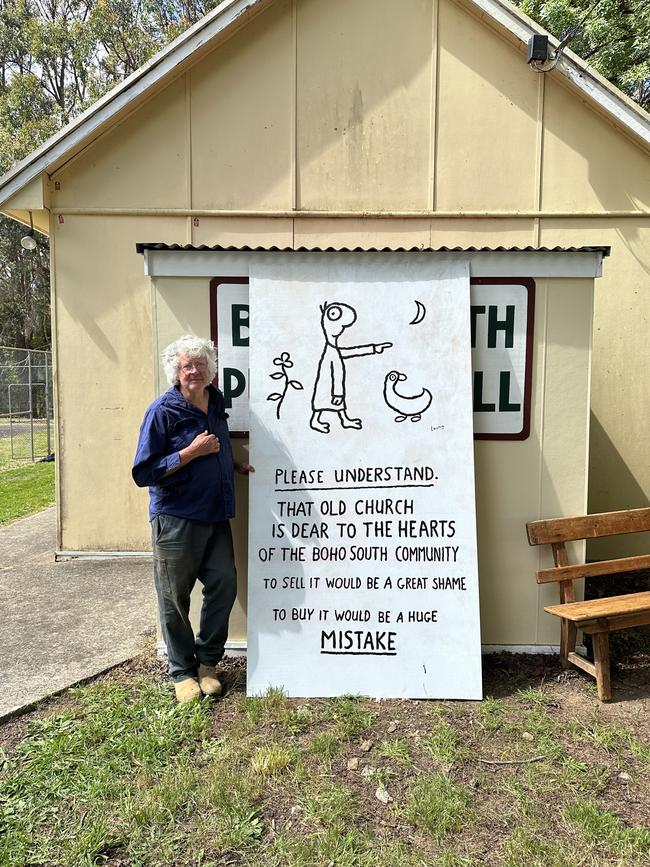

As with the closure of banks, post offices or a town’s only pub, the sale of a country church for whatever reason signals the end of a way of life. Residents who might never step foot in their local place of worship often feel a sense of ownership, that this is a community building that speaks to the shared colonial history of the district not just its religious heritage.
Dr Ruth Powell, director of the National Church Life Survey, says these sacred spaces often bring deep meaning and memories for people who’ve marked significant life events within their walls. “They grieve when it’s gone,’’ she says. “For a community the church represents stability, longevity, values, something about who we are, what’s important to us. Whether or not you’re a person of faith, it represents all of that.”
Faith is more than buildings and real estate transactions but the loss of these symbols of Christianity lead some to wonder what it says about the future of Christendom itself.
In November 1929 the good people of Langhorne Creek in South Australia turned out for the dedication of St John’s, a splendid little limestone Anglican Church. The village of 95 souls had worked hard to raise the £1200 to build the structure and were proud of its stained glass windows, soaring cathedral ceiling and bell tower gifted by a local family. Politician and pastoralist Sir Lancelot Stirling laid the foundation stone, his comments to parishioners duly reported by the Southern Argus: “He hoped that their interest would not wane with the completion of the building, but their loyalty to the church itself grow warmer with time, and their little temple prove a source of gratification and joy to them in the years to come.’’
For years the church on the main road to Strathalbyn, southeast of Adelaide, witnessed weddings, funerals and baptisms and drew a small crowd to Sunday service, but as the wine town of Langhorne Creek grew, the congregation shrank. “Over probably the last 20 or 30 years, I’d say, that parish has been in decline like many rural churches,’’ says Reverend Andrew Klynsmith.

The latest Census found that across Australia the number of people connected with Christianity dropped from 52 per cent in 2016 to 43.9 per cent in 2021, with the Anglican and Catholic affiliations suffering the biggest falls. Weekly attendance at many churches is down and weddings, baptisms and funerals no longer fill the pews with any regularity; people are choosing other locations for their significant ceremonies. “Even Christian couples that I marry often want to marry in a garden or at a beach rather than in the church building. And funerals are very often happening in funeral parlours,’’ Klynsmith says.
Bishop Condie in Tasmania confirms the trend. “The number of non-regular attendees who want a child baptised these days is very small. There’s a declining number of people who want church weddings … As Australia becomes more secular, lots of people are electing to have a civil celebrant,’’ he says.
By the end of its life St John’s in Langhorne Creek had only one regular parishioner, the lady who lived next door.
–
“She was the organist so she’d open up and set everything up, and very often it would just be her and the priest,’’ Klynsmith says.
–
It couldn’t go on. Birds and bats were invading the building, and it was falling into disrepair. For its final deconsecration service the little chapel was once again filled with people, just as it had been almost 100 years previously when it opened. “There was a mix of sadness but also a sense that the building was going to get a new lease of life,” Klynsmith says. “And also, we were really sure that from the funds generated by the sale of the church we’d be able to use the money to support ministry in various ways. We really wanted people to know that whilst the church was closing God hadn’t given up on Langhorne Creek.”
The church was sold in May last year for $495,000 to a couple planning to turn it into a residence, leaving the Uniting Church as the sole place of worship in town – and the next-door neighbour with a 10-minute drive to an Anglican Church in the next town.
Larger centres with bigger congregations aren’t spared the angst over ageing buildings. Just up the road in Strathalbyn the striking form of St Andrew’s Uniting Church has been adopted as the town’s logo but recognition alone won’t pay the estimated $1.8 million required to renovate the 180-year-old building’s roof, walls, clock tower and spire. Parishioners are trying to raise the funds through concerts and history tours, bequests and heritage grants, but it’s a slog: since 2021 they’ve raised about $284,000.

In Tasmania the midlands town of Ross, known for its 1836 convict-built bridge and well preserved sandstone buildings, lost two of its historic churches to private buyers last year. Locals fought hard to save the older of the buildings, the 1869 Gothic Revival St John’s Anglican Church – but even if they could have raised $200,000 to buy it, the estimated $750,000 to restore it proved too much. St John’s and the 140-year-old Uniting Church on the hill were locked up and left, leaving townsfolk to wonder who bought them and what their plans are. “We just hope it’s appropriate,’’ says Christine Robinson, who led the fight to keep St John’s in community ownership.
There are little spotfires everywhere: in Snake Valley, 30 minutes from Ballarat, Victoria, locals rallied to stave off the threatened closure of the 131-year-old bluestone Carngham Uniting Church. At Jerrys Plains, in the Hunter Valley in NSW, a battle is underway to stop the sale of its historic Anglican Church.
Ageing buildings, dwindling congregations, rising secularism, a shortage of ministers … I ask Klynsmith what Christianity in country towns might look like in a decade. He thinks back to the early days of circuit ministers on horseback conducting services in people’s homes or community halls. “I reckon the visibility of the church might disappear but there will still be communities of faith meeting in towns, meeting in people’s homes and encouraging one another as they try to share God’s love,’’ he says. “Visibility is kind of nice, but I think the real visibility for the church is in what the church does.’’
Powell says the reality is that too many churches were constructed, especially in small towns. Sometimes the only evidence of an early settlement is a lone abandoned church still standing by a roadside. In other towns a church stands on every corner. “Everybody had their own patch, the Catholics had theirs, Anglicans built their own … for the Australian population, there was so much building work done, perhaps it was a little excessive,’’ she says.
She agrees with Klynsmith that the visibility of the church through physical structures will fade. “It already is. But the building is not the church; anybody who has any connection with church knows that the church is the people.’’
It’s a bright cool morning in Boho South, a scenic and tiny settlement in the Strathbogie Ranges just over two hours’ drive northeast of Melbourne. Outside the community hall celebrated Australian cartoonist and local resident Michael Leunig casts a look at his latest creation and chuckles. “I guess it does look kind of … menacing,’’ he says.
There’s no town as such in Boho South, just the community hall, the little timber church next to it and the country fire service headquarters. Driving past, you can’t help but notice the large black and white Leunig cartoon fixed atop the community hall. A figure accompanied by the artist’s signature duck is pointing towards the Uniting Church with the headline, underlined for emphasis: Please Understand.
It follows: That old church is dear to the hearts of the Boho South community. To sell it would be a great shame. To buy it would be a huge MISTAKE. Another sign offers further explanation. Fair is Fair. The community donated this land to the church. Now the church refuse to be charitable. GIVE IT BACK. STOP DEVELOPMENT. SAVE OUR COMMUNITY LANDSCAPE.
It might seem a distinctly unfriendly welcome but the locals who meet me at the hall are an affable lot. They keep the community hall going with various get-togethers and have been mowing the grass around the old church since it shut in 2014. They say the land it stands on was donated by local man Jack Smith in 1960, and the church and land subsequently transferred to the Uniting Church.
Resident Amanda Koehler says after discussions with Smith’s family it’s understood he donated the land for community use. “We were really disappointed that we didn’t even get first right of refusal from the Uniting Church,’’ Koehler says of the “For sale” sign that took everyone by surprise last November. Locals see the land as part of one communal block with the nearby hall; to turn the church into a house or Airbnb would impact the gathering space of the hall, they argue.
“When we first heard, everyone was saddened and we jumped into action,’’ Leunig says of the joint enterprise of painting and mounting the sign. He looks over to the church and to his neighbours filing in and out of the timber hall. “People coming together and caring for a public space like this, it’s important,’’ he says. “There’s a spiritual history to these places and it lingers on. These buildings are a part of old Australia that is disappearing.’’
Reverend David Fotheringham, moderator of the Uniting Church synod of Victoria and Tasmania, says the church tries to work with communities “as best we can’’ and hopes to sell to community organisations if possible. “We have responsibilities to ensure that property that has been donated to the church is used for church purposes,” he says. “Therefore it’s not possible to give it away as such, we have a duty under trust law.’’
Across the church landscape it’s not all controversy, he insists. Communities often make the decision to close a church and downsize and meet in different ways. In some areas the organisation is opening churches, he says. “The church is moving and growing and living in different ways in different parts of the community. There are many examples of small churches continuing, it’s not all stories of closures.’’
Churches are sharing buildings across denominations, using video links to reach smaller communities, meeting in homes and public places, the pub or pizza shop. “Being a congregation means worshipping and witnessing together, growing in faith and understanding together, sharing life together. It doesn’t necessarily require a particular building,’’ Fotheringham says.
In Tasmania, a quarter of the funds raised from church sales went not to historic sex abuse redress but to a new ministry development fund that has been used to help place ministers in rural churches. “We were criticised a lot, but the long-term vision for us was to see revitalisation of ministry in rural Tasmania – and we have seen it in seven locations,’’ Condie says. “It’s hard work; the declining rates of nominal Christianity puts a pressure on us. But over its long history the church has had its rises and falls and so we’re doing everything we can to breathe life into it.’’
The most recent Church Life Survey estimated that some 1200 churches closed in Australia between 1991 and 2016. Powell says when the next survey arrives she believes Covid will have escalated the rate of closures. The bigger question will be whether growth, mainly in Pentecostal movements, will balance that out. “The flip side is there’s actually a lot of new activity that is less visible. As one thing closes and shrinks, there’s a counter movement springing up,’’ she says.
These new congregations are often not tied to a building or particular town, they are agile and entrepreneurial and they meet in a variety of places. Her organisation is trying to track this church planting through a live online dashboard that shows some 254 churches have started since 2021. “We will have a situation where this number have closed but this lot has opened. What’s happening on the surface doesn’t show all the activity underneath.’’
In the quiet, small South Australian town of Hamley Bridge, an hour north of Adelaide, there’s a flurry of activity at the old Uniting Church. Lino is being ripped up to reveal pine boards, old theatre chairs that served as pews are being cleared out and the piano has gone. Nerissa Burnham and her partner Jonathan Dowling, a builder, have restored a church in the Blue Mountains in NSW and they bought this little limestone building after years of struggles by the local parish to keep it going.
Built in the early 1870s, it closed its doors in 2013 – reportedly after the minister arrived for Sunday service to find no one there – and the handful of parishioners decided to meet in their homes on Tuesdays to share a meal and fellowship. Under this more informal model numbers grew to 14, reported the local Uniting Church newsletter, and the church reopened is doors in 2015 not for Sunday service but for Tuesday evening get-togethers with shorter sermons.
But that didn’t last, and when the “For sale” sign when up late last year the couple bought it for $260,000 with plans to transform it into a home. What was the response in town? “I believe they’re pretty happy because we’re going to restore the character and keep it as part of the town’s history,’’ Nerissa says.
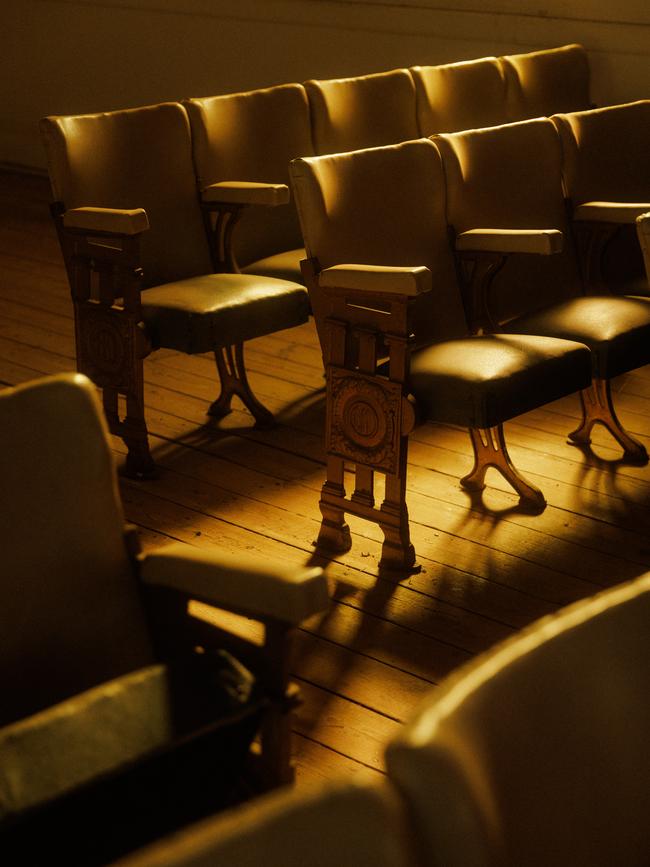

But it hasn’t been all smooth sailing. The church has four marble memorial plaques and some in the community have questioned whether they should be returned to the families who erected them. “The problem is there’s a covenant in the contract that we signed that they have to stay with the church, so we’re the piggies in the middle,’’ Nerissa sighs. “Apparently this happens a lot when you buy a church – blurred lines.’’ Under the terms of sale the stained glass windows must also remain with the church. Once the place is renovated they plan to hold an open day to welcome the community back in, to reassure them that the history of the church has been honoured.
Buying a church is not like purchasing a home. Locals can express unwelcome views about renovations and extensions, or be overjoyed that a church has fallen into careful hands. Some church communities have spoken of their relief at being freed from the upkeep of an old building, pleased that they can concentrate on worship and fellowship rather than the demands of constant repairs. “Often it’s the people who are active in the church who are ready to move on, who want to meet at the school or wherever because it’s a much nicer space, and it’s the town hanging on to the building,’’ Powell observes.
Condie sees benefits in private ownership of these significant buildings because many new owners take seriously their responsibility to preserve them. “Even with the best will in the world we struggle to maintain active churches, it can be very costly,” he says. “The built fabric of these buildings is often preserved by them going into private hands.’’
The real estate listing for Tasmania’s 176-year-old Church of St Mary the Virgin, 45 minutes’ drive from Hobart, didn’t sound promising: “This heritage church is not for the faint hearted and does requires work!’’ It came with a graveyard containing some 400 bodies, and had to remain open for future burials. Under Tasmanian law the new owners were required to become cemetery managers and show they were fit and proper people to maintain the operation. The $150,000-plus price guide drew a lot of interest but no buyers until last month when the agent could finally put up a sold sign – an undisclosed party had taken the leap of faith.
At least 17 Anglican churches offloaded in the mass sell-off had cemeteries or columbariums – such was the outcry that the Tasmanian Government tightened the law to prevent them being used for any other purpose for 100 years after the last interment.
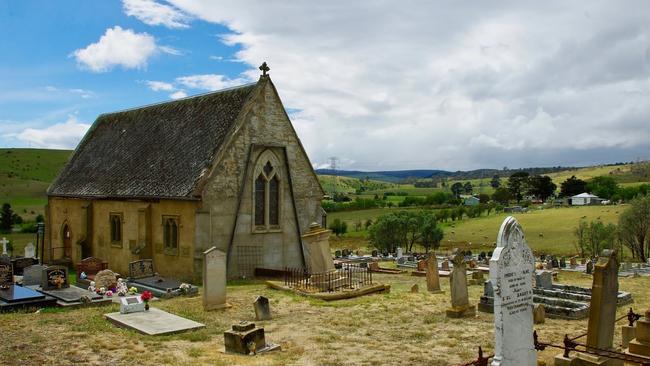
The sale of cemeteries adds an extra layer of complication, with concerns over visitation rights and the future of pre-purchased plots, but Liebelt from the Churches for Sale Australia Facebook page says there’s a sub group of buyers who specifically want cemeteries.
In Hay Valley, South Australia, Nanette and Adam Charleson had always wanted to buy a church and were drawn to the cemetery in the backyard. “It wasn’t a problem for us at all,’’ Nanette says, walking through the graves to a seated area where she and Adam like to have a morning coffee. “Look at it, it’s beautiful.’’
They moved in last January, thankful that the hard work had already been done by the previous owner, Mikyla Gilbert. Gilbert says the cemetery, covered in blackberries and gorse, was a selling point for her; she’s a history buff, and her then husband had a long family history in the district. She had the building and cemetery listed on the local heritage register and welcomed the small number of people who came to visit loved ones. “We discovered graves no one knew were there,’’ she says. “We’d wake up some mornings and there’d be fresh flowers in the backyard and on our front doorstep would be a bottle of Roundup and a six-pack of beer saying thanks for looking after aunty whoever. It was really quite beautiful.”
Despite being told there would be no new burials, one day she had a visit from the local funeral director – another member of the Day family was to be buried here. “Her whole family were already here. So there was a fresh grave in the backyard and it felt great, actually, to be able to help her be with her family.’’
Last year Gilbert decided to move on to her next renovation project. “We had two open houses for the church with over 200 people at each of them. There was like a line down the middle – half who loved it, half who hated it because of the cemetery. Not everyone wants 100 or so dead bodies in the backyard.’’
The story of the little primitive methodist church and its garden of graves is a happy one. A ramshackle building is remade as a family home; an overgrown cemetery falls into the hands of people who honour its history.
A short drive away, in Hahndorf, one of Liebelt’s churches is a thriving Airbnb and across the country these old churches are once again filled with the hum of people who now live and holiday in them, taste wine or peruse art or even wed in them. The faithful are still there, but, like the church, they’re changing.


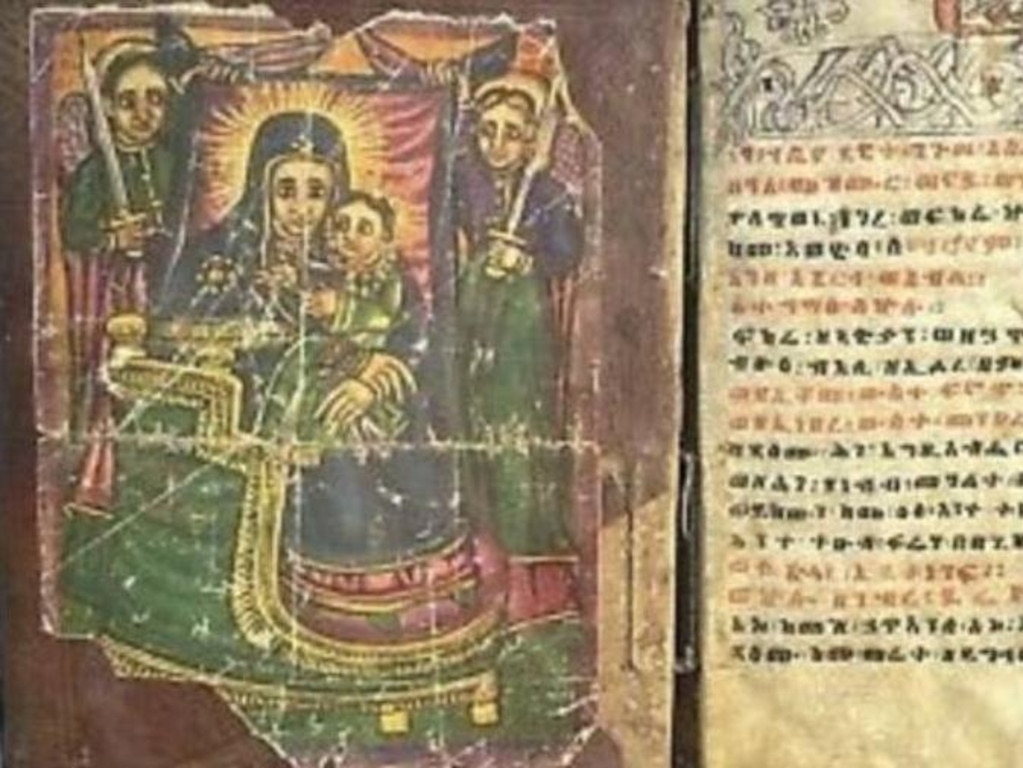
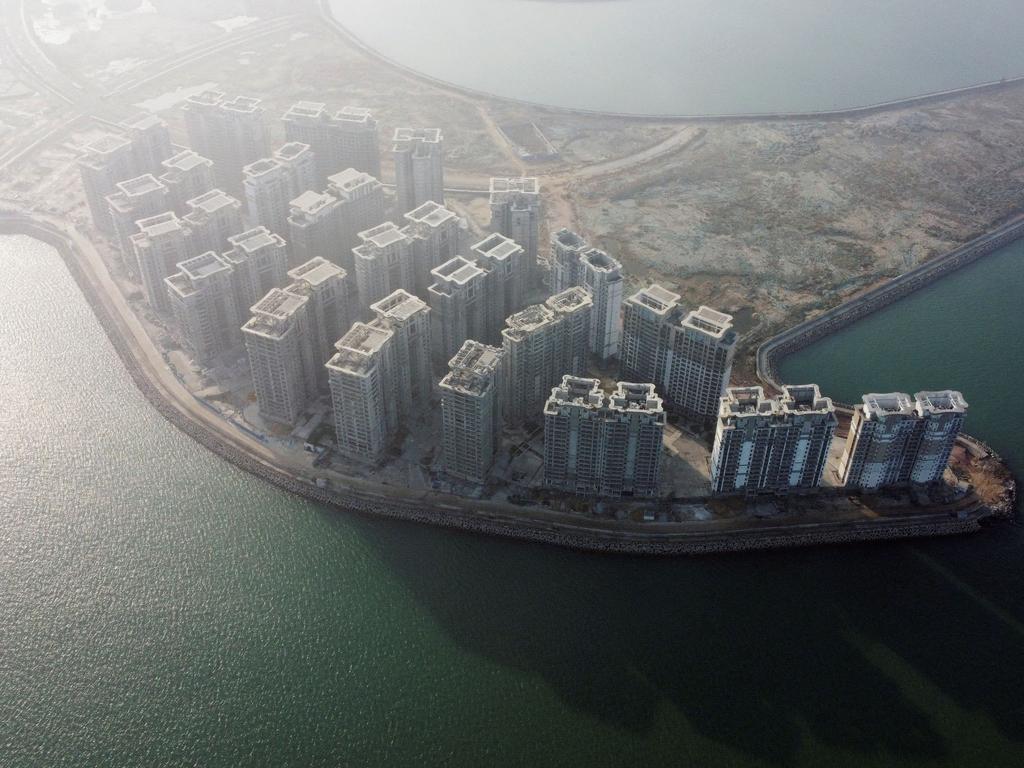
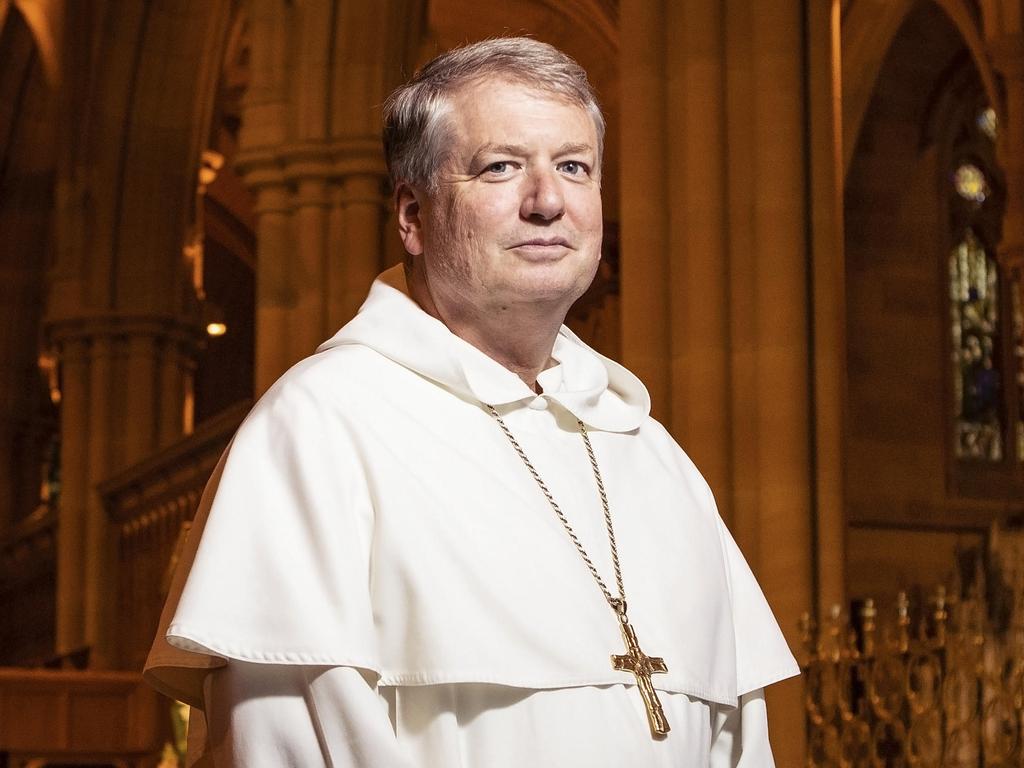

To join the conversation, please log in. Don't have an account? Register
Join the conversation, you are commenting as Logout